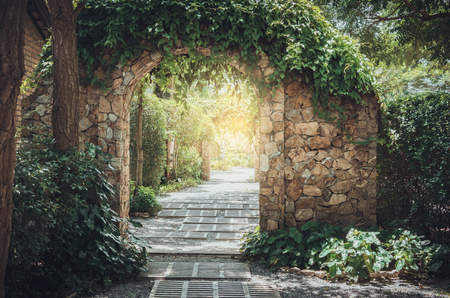Introduction to Drought-Tolerant Rock Gardening
Living in the arid landscapes of the Southwestern United States means adapting to long, hot summers and minimal rainfall. For many families, traditional lawns and thirsty flower beds simply aren’t practical. That’s where drought-tolerant rock gardens come into play. These gardens not only save water—a precious resource in the Southwest—but also blend beautifully with the region’s natural environment and laid-back lifestyle. By embracing native stones, gravel, and hardy plants, you can create a low-maintenance outdoor space that thrives under the sun and complements your local surroundings. Plus, rock gardens offer unique textures and colors that enhance curb appeal while providing a sustainable solution for homeowners who want their yards to look great year-round without constant watering or upkeep.
Understanding the Southwestern Climate
Before you start building a drought-tolerant rock garden, it’s essential to understand what makes the Southwestern U.S. climate both challenging and unique. This region is defined by its arid and semi-arid zones, which means gardeners face hot days, cool nights, scarce rainfall, and soil that’s often rocky or sandy. These factors make traditional gardening tough, but with the right approach, your landscape can thrive.
Temperature Extremes
The Southwest is famous for its dramatic temperature swings. Summer afternoons can soar well above 100°F (38°C), while nighttime temperatures may drop sharply—sometimes even within the same day. Plants must be resilient to withstand this stress. Choosing species adapted to these fluctuations is key.
Limited Rainfall
Annual precipitation in the Southwest is among the lowest in the country. Some areas receive less than 10 inches of rain a year, mostly during brief monsoon bursts or winter showers. Efficient water use isn’t just smart—it’s necessary for success.
| Region | Average Annual Rainfall (inches) |
|---|---|
| Phoenix, AZ | 8.0 |
| Las Vegas, NV | 4.2 |
| Albuquerque, NM | 9.4 |
Soil Types
The ground in much of the Southwest is a mix of sand, clay, rocks, and caliche—a hard layer of calcium carbonate that can block roots and water movement. While these soils drain quickly (great for succulents and cacti), they often lack organic material and nutrients most plants crave.
| Soil Type | Main Characteristics |
|---|---|
| Sandy Soil | Fast-draining, low fertility |
| Clay Soil | Poor drainage, can compact easily |
| Rocky/Gravelly Soil | Excellent drainage, low organic matter |
Tackling the Challenges as a Gardener
If you’re planning a rock garden in the Southwest, think like nature: embrace drought-tolerant plants, improve your soil with compost or gravel as needed, and work with—rather than against—the heat and dryness. Understanding these environmental factors will help you create a beautiful space that’s both sustainable and uniquely Southwestern.

3. Selecting the Right Location and Rocks
Choosing the best spot in your yard is a crucial first step when creating a drought-tolerant rock garden in the Southwest. This region’s intense sun, unpredictable rainfall, and often rocky soil mean that a little planning goes a long way. Start by observing your yard throughout the day—notice which areas get the most sunlight, where water naturally flows or pools after rain, and which spots tend to dry out quickly. Ideally, you want to place your rock garden on higher ground or a gentle slope. This encourages proper drainage and prevents water from sitting around your plants’ roots, which can lead to rot.
Sourcing rocks is more than just picking what looks pretty at the store. For an authentic Southwestern vibe, look for stones that reflect your local landscape—think sandstone, granite, or lava rock. Check with local quarries or landscaping suppliers; not only does this support your community, but local rocks are often better suited for the climate and less likely to shift or erode over time. If possible, choose a variety of sizes, from large boulders to smaller gravel, to mimic nature’s randomness and create nooks for plants.
Tips for Placement and Water Management
Work With Nature
Instead of fighting your yard’s natural grade and flow patterns, use them to your advantage. Arrange rocks so they guide rainwater toward thirsty plants while allowing excess water to drain away easily. Creating small berms or dry creek beds with river rocks can help manage runoff while adding visual interest.
Think About Sun Exposure
Most drought-tolerant plants love full sun, but placing some larger rocks strategically can provide shade during the hottest part of the day. This helps keep roots cooler and conserves soil moisture—a win-win for both you and your plants.
Pro Tip
If you’re sourcing rocks from offsite locations, always check local regulations to avoid disturbing protected habitats or running into legal trouble.
By thoughtfully selecting your site and rocks, you’ll lay a strong foundation for a resilient rock garden that thrives through even the toughest Southwestern summers—and looks like it truly belongs in your own backyard oasis.
4. Choosing Drought-Tolerant Plants
When it comes to building a successful rock garden in the Southwestern United States, selecting the right plants is key. Focus on species that are both drought-tolerant and adapted to the regions hot, dry climate. Native plants are always a strong choice, as they’re already suited to local conditions, attract beneficial wildlife, and generally require less water and care than non-natives.
Consider these categories of drought-tolerant plants:
Local Favorites for Southwestern Rock Gardens
| Plant Type | Examples | Benefits |
|---|---|---|
| Succulents | Agave, Yucca, Red Yucca, Prickly Pear Cactus (Opuntia), Hens-and-Chicks (Sempervivum) | Store water in leaves; provide striking textures and forms; low maintenance |
| Wildflowers | Desert Marigold, Penstemon, Mexican Hat (Ratibida columnifera), Blanket Flower (Gaillardia) | Add pops of color; attract pollinators like bees and butterflies; often reseed themselves |
| Shrubs & Grasses | Mormon Tea (Ephedra), Apache Plume (Fallugia paradoxa), Bear Grass (Nolina), Blue Grama Grass | Add structure; create movement with wind; provide habitat for wildlife |
Why Choose Native and Adaptive Plants?
Native plants such as desert willow or brittlebush have evolved to handle the extreme swings in temperature and rainfall that are typical in the Southwest. Adaptive varieties—plants from similar climates around the world—can also thrive here if chosen carefully. Both groups offer resilience against drought, resist local pests, and often need less fertilizer or soil amendment than imported ornamentals.
Tips for Plant Selection
- Check with your local extension office or native plant society for recommended species.
- Select a mix of evergreen and seasonal bloomers for year-round interest.
- Group plants with similar water needs together to make irrigation more efficient.
- Avoid invasive species—even if they’re drought-hardy—to protect local ecosystems.
The Beauty of Diversity
A thoughtfully chosen mix of succulents, wildflowers, shrubs, and ornamental grasses not only conserves water but also celebrates the unique beauty of Southwestern landscapes. Embrace the natural palette—your rock garden will be both resilient and stunning.
5. Design Principles for Rock Gardens
Designing a drought-tolerant rock garden in the Southwestern United States is as much about artistry as it is about practicality. The key to a successful layout is finding the right balance between rocks, plants, and open spaces so your garden feels both natural and inviting. Start by considering layering: arrange larger boulders or rocks as anchors at the back or center of your space, then use medium-sized stones and gravel to create gentle transitions toward the edges. This approach mimics how rocks settle naturally over time and gives your garden depth.
Mindful Spacing for Healthy Growth
When it comes to spacing, resist the urge to pack plants too closely together. While your new garden might look sparse at first, drought-tolerant plants like agaves, yuccas, and penstemons need room to spread out and access water without crowding their neighbors. Think about each plant’s mature size and leave enough open ground for air circulation—a simple trick that helps prevent rot and keeps maintenance low.
Arranging Rocks and Plants for Harmony
The real beauty of a Southwest-style rock garden comes from thoughtful arrangement. Alternate clusters of rocks with pockets of vibrant, resilient plants to create visual rhythm. Tuck succulents and wildflowers into crevices to soften hard edges, or let trailing groundcovers spill over stones for a more relaxed, lived-in effect. Vary heights and textures so every corner offers something unique, just like the diverse landscapes found throughout Arizona or New Mexico.
Tips for a Balanced Layout
Aim for an informal look—avoid straight lines or overly symmetrical patterns. Instead, stagger rocks in groups of odd numbers (threes or fives work well) and place plants off-center from stones for a more organic vibe. Always step back now and then to view your progress from different angles; this helps ensure your design feels balanced from every direction. Remember, your rock garden should reflect the rugged spirit of the Southwest while providing a peaceful retreat for you and local pollinators alike.
Watering and Maintenance Tips
Maintaining a drought-tolerant rock garden in the Southwestern United States means embracing smart, water-wise habits that work with your local climate—not against it. Here are practical tips on irrigation, mulching, and keeping upkeep minimal while letting your landscape shine.
Irrigation: Less Is More
Forget daily watering schedules—most drought-tolerant plants prefer deep but infrequent watering. Use drip irrigation or soaker hoses to deliver water right to the roots, minimizing evaporation. Water early in the morning to reduce loss from midday heat, and always check soil moisture before watering again. If you see wilting during the hottest part of the day, don’t panic; many native plants perk up by evening.
Mulching: The Secret Weapon
Top your soil with a 2-3 inch layer of organic mulch like shredded bark, pine needles, or even gravel for that classic Southwestern look. Mulch helps regulate soil temperature, reduces evaporation, and keeps weeds at bay. Around succulents and cacti, decorative rocks act as both mulch and a visual accent—just ensure good drainage so roots don’t sit in soggy soil after rare rainstorms.
Choosing the Right Mulch
Organic mulches break down over time and improve soil health, making them great for areas with perennial wildflowers or shrubs. In contrast, inorganic mulches like decomposed granite or river rock offer permanent weed suppression and help reflect sunlight around heat-loving plants.
Low-Maintenance Care Strategies
The beauty of a Southwestern rock garden is how little fuss it requires once established. Pull weeds promptly while they’re small—mulch will keep most at bay. Prune dead or damaged plant parts during cooler months and remove fallen leaves or debris that might harbor pests. Fertilizer is rarely needed; if you do feed, use a slow-release product sparingly in spring.
Pro Tip: Observe Before You Intervene
Spend time watching your garden through the seasons. Native and drought-adapted plants have evolved to handle tough conditions; sometimes what looks like stress is just natural dormancy. Resist the urge to overwater or pamper—let your resilient landscape do its thing!
7. Encouraging Local Wildlife and Pollinators
Creating a drought-tolerant rock garden in the Southwestern United States doesn’t mean you have to sacrifice the lively presence of birds, bees, and butterflies. In fact, with a little planning, your water-wise garden can become a safe haven for local wildlife and essential pollinators. Here are some simple strategies to make your rock garden inviting while staying true to its drought-tolerant design.
Choose Native Flowering Plants
Select native perennials like penstemon, desert marigold, and salvia, which are naturally adapted to the arid climate and provide nectar for hummingbirds and bees. These plants thrive on minimal water and bloom at various times throughout the year, offering consistent food sources for pollinators.
Add Multi-Level Perches and Shelter
Incorporate rocks of different sizes to create ledges and nooks that offer birds safe places to perch or rest. Small piles of stones or logs can also serve as shelter for beneficial insects or lizards. The varied terrain mimics natural habitats, making wildlife feel right at home.
Offer Water Wisely
While drought-tolerance is key, even a small shallow birdbath or a rock with a carved-out basin filled with rainwater can provide much-needed hydration for visiting creatures. Place these features in shady spots to reduce evaporation and keep water cleaner longer.
Avoid Chemicals
Skip pesticides and herbicides in your rock garden. These chemicals can harm bees, butterflies, and other helpful insects. Instead, let nature take its course—healthy ecosystems often balance pests with natural predators like ladybugs and birds.
Plant in Clusters
Group similar flowers together rather than scattering them singly. This makes it easier for pollinators to find what they need without expending extra energy—a real bonus during hot Southwestern summers.
Leave Some Bare Ground
Certain native bees nest in bare soil. By leaving small patches of exposed earth among your rocks, you’ll encourage ground-nesting pollinators without detracting from the clean look of your garden.
By thoughtfully integrating these features into your drought-tolerant rock garden, you’ll not only conserve water but also nurture a thriving ecosystem right in your backyard—a win-win for both you and your local wildlife.

